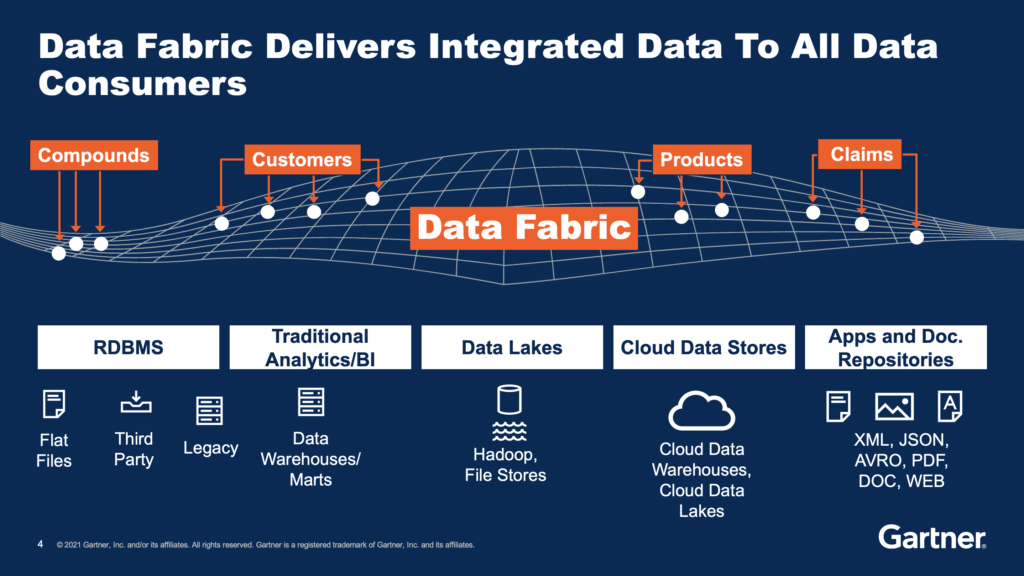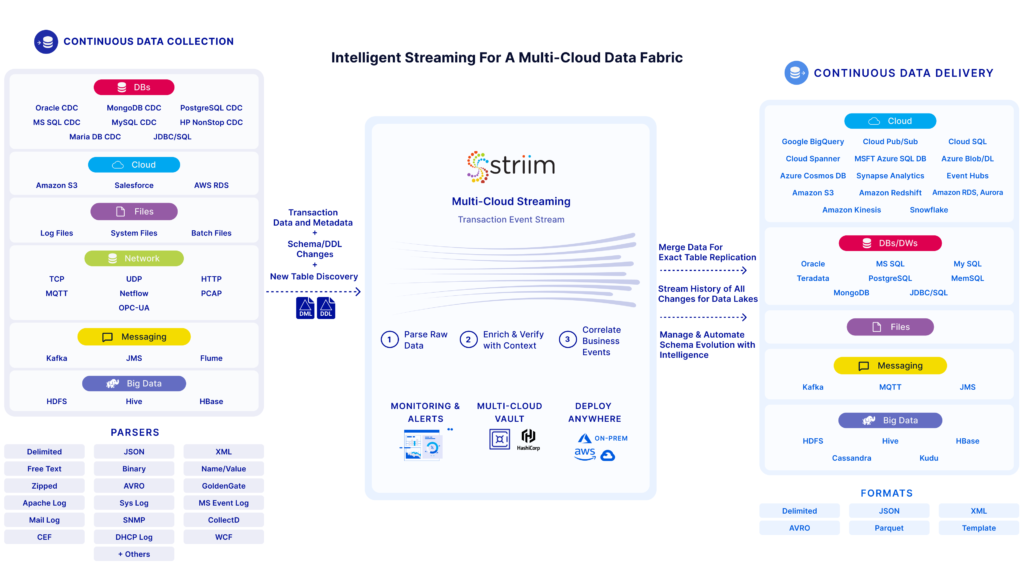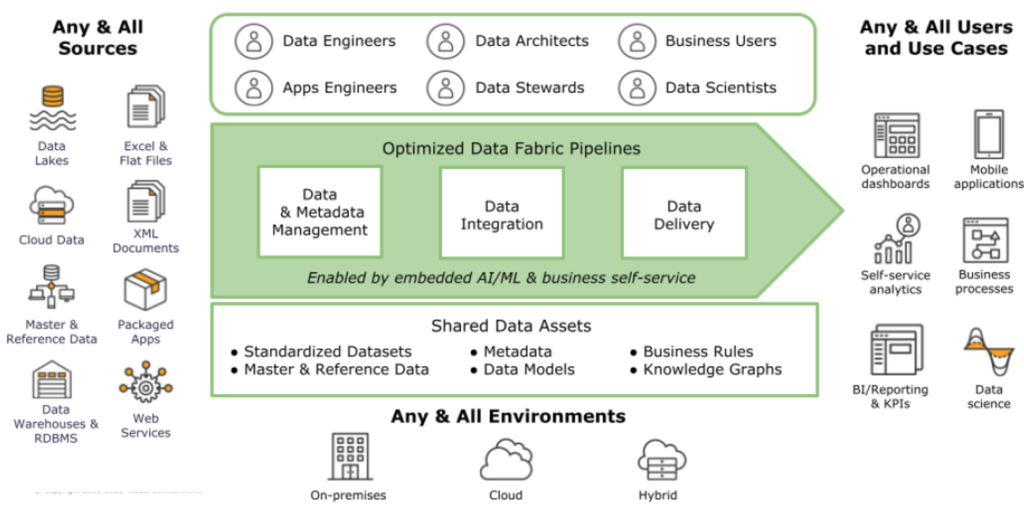Latest Technic Data Fabric 2022
What is a data fabric?

A data fabric is an architecture and set of data services that provide consistent capabilities across a choice of endpoints spanning hybrid multicloud environments.
It is a powerful architecture that standardizes data management practices and practicalities across cloud, on premises, and edge devices. Among the many advantages that a data fabric affords, data visibility and insights, data access and control, data protection, and security quickly rise to the top.
Why a data fabric?

Monitor and manage your data and applications, regardless of where they live.
A data fabric is, at its heart, an integrated data architecture that’s adaptive, flexible, and secure. In many ways, a data fabric is a new strategic approach to your enterprise storage operation, one that unlocks the best of cloud, core, and edge. It can reach anywhere, including on premises, public and private clouds, and edge and IoT devices, while remaining centrally governed.
Gone are the days of disparate, disconnected infrastructures and data siloes the size of skyscrapers. A data fabric is built upon a rich set of data management capabilities that ensure consistency across your integrated environments. It reduces tedious management through automation, speeds up dev/test and deployment, and protects your assets 24x7x365.
From this unified platform, you can monitor storage costs, performance, and efficiency—the “who is using what and how”—regardless of where your data and applications live. Once you’ve gained actionable insight into your hybrid cloud environment, you can rapidly (and, in some cases, automatically) make changes to it, including remediating problems, addressing security and compliance risks, and dialing up and down compute.
Optimize as you go, even on the go. And while you optimize to save big bucks on storage, your data is protected by the highest levels of encryption—security isn’t an afterthought, but an innate attribute of a data fabric built with NetApp—with advanced backup and restore capabilities, including space-efficient read-only snapshots. Translation: unhappy hackers.
The moral of the story? A data fabric improves end-to-end performance, controls costs, and simplifies infrastructure configuration and management.
What a it can do for you?

A data fabric ultimately helps your organization unleash the power of data to meet business demands and gain a competitive edge. It allows your IT organization to better harness the power of hybrid cloud, build a hybrid multicloud experience, and modernize storage through data management.
Data drives competitive advantage for every business
We are living in a time of unprecedented pace of change – change across the pace of business and innovation. In this paradigm, data drives competitive advantage for every business to succeed and thrive, and organizations need to deliver data quickly to serve business and customer needs. In fact, according to a recent Forrester study , insight-driven businesses are growing at an average of more than 30% annually.
Recognizing this, more organizations are trying to obtain additional value from their data in a variety of ways, including creating new revenue streams and reducing costs through operational efficiencies. However, with the prevalence of the cloud and Internet of things, along with increasingly cheaper storage and processing, data is no longer bound to on premises data centers. There is more data, more types of data, and it is in many more locations, making it much more difficult to manage.
Difficulties of dealing with your information
Prevailing in this climate and turning into an information driven association is difficult. There are numerous barricades while heading to turning into a computerized pioneer. As associations utilize an ever increasing number of uses, their information turns out to be progressively siloed and difficult to reach past its underlying extension. While heritage frameworks and frameworks just irritate the issue, information can become siloed while attempting to relocate to the cloud. It very well may be particularly challenging to divide information among information dwelling on various public mists (for example AWS and Azure) or between a public cloud and on-premise server farm, or putting away everything in a cloud information distribution center.
A normal organization today has information in numerous on-premises areas as well as various public or potentially confidential mists. The information is both organized and unstructured and kept up with in a wide assortment of configurations – document frameworks, social data sets, SaaS applications, and so on. What’s more, handling that information traverses a huge number of innovations, from cluster ETL or ELT handling to changed information catch to constant streaming. With just about 3/4 of associations (74%) utilizing at least 6 information coordination instruments, it turns out to be undeniably challenging for associations to be deft and immediately ingest, coordinate, examine, and share their information and consolidate new information sources.
To Read more about OWASP Click Here
You can also visit- https://www.facebook.com/theitarchitects

1 Comment